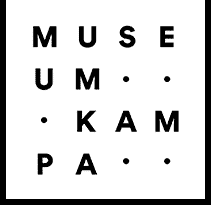The collection of works by František Kupka (1871-1957), one of the most important 20th century artists, is central to the Jan and Meda Mládek Collection. This priceless collection features 215 oil paintings, studies and drawings, and it is one of the most comprehensive private collections in the world. Meda Mládek donated the collection to Prague, and it is curated by Museum Kampa.
The collection traces the development of Kupka’s abstract art; unlike Kandinsky and Malevich, Kupka started with the figure. It opens with several paintings and drawings that were still in the Art Nouveau style, followed by illustrations for French satirical magazines from the first few years of the 20thcentury, and then figurative works from 1906-1912. They include a watercolour study for Bathing Woman(1906) and a number of Gigolettes (1908-1909 – painting, drawings). The collection also includes one of the first two abstract paintings ever to be exhibited, Amorpha, Warm Chromatic, which was shown alongside Amorpha, Fugue in Two Colours(now at the National Gallery in Prague) in the Cubist room at the Autumn Salon in Paris in 1912. Kupka’s purely abstract studies for his Discs of Newton (1911-1912) and the painting Around a Point (1911-1930) are very important. There are also preparatory drawings for Amorpha, Fugue in Two Colours (1911-1912) and a series of studies for Cosmic Spring – Creation (1911-1920), A Tale of Pistils and Stamens (1911-1919) and Four Stories of White and Black. One of the largest and most beautiful paintings in the collection was formerly Localisation of Graphic Motifs II (1912-1913), which Jan and Meda Mládek donated to the National Gallery in Washington, where it is now part of the permanent exhibition. One of Kupka’s most impressive paintings is Cathedral (1912-1913). Meda Mládek first met Kupka in 1955, when she was studying art history in Paris, and she has been a passionate collector of his art ever since. Today no major retrospective of Kupka’s work can dispense with studies and paintings from her collection.
